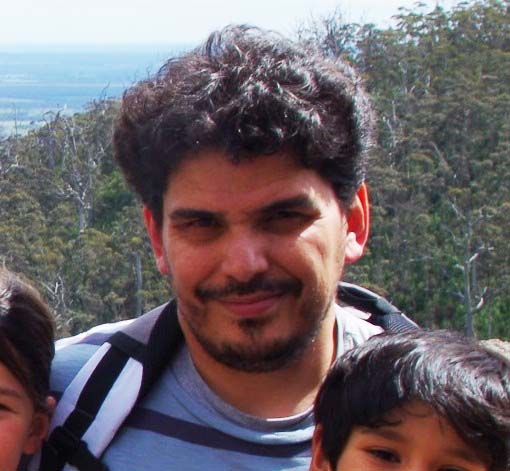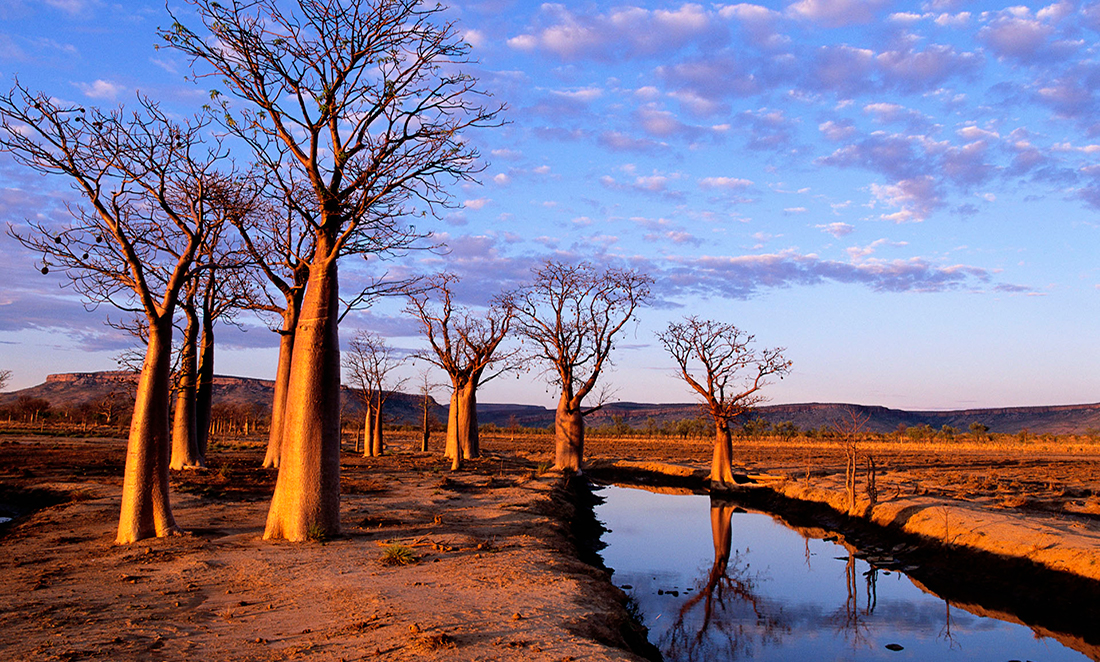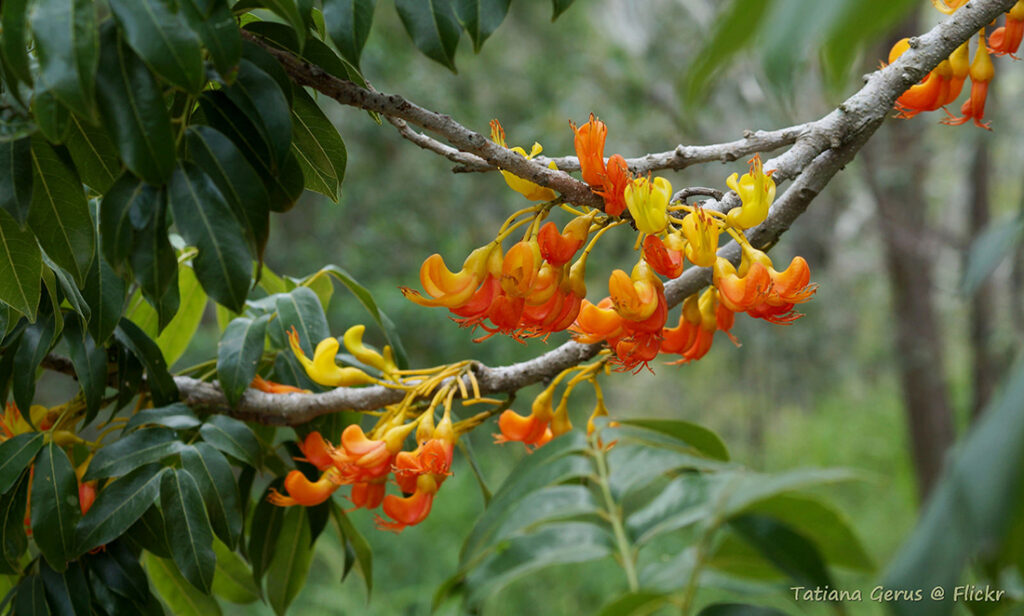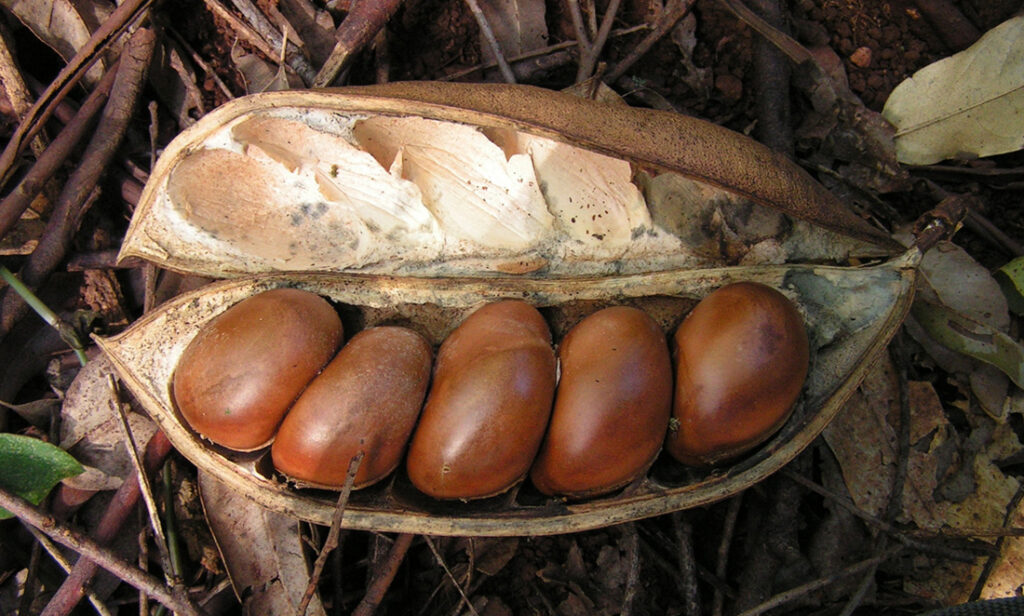Humans have been influencing their surroundings since prehistoric times. They’ve changed the land, established crops, hunted and raised animals and collected plants from the wild. Humans are also blamed for the extinction of many species.
But for some species, human intervention was actually a good thing. It helped them thrive and spread across Australia.
Trees on the move
For a long time, the first inhabitants of this country have been considered hunter-gatherers. They weren’t thought to be involved with the spread of other species, but the current distribution of some Australian native plants is hard to explain by natural processes.
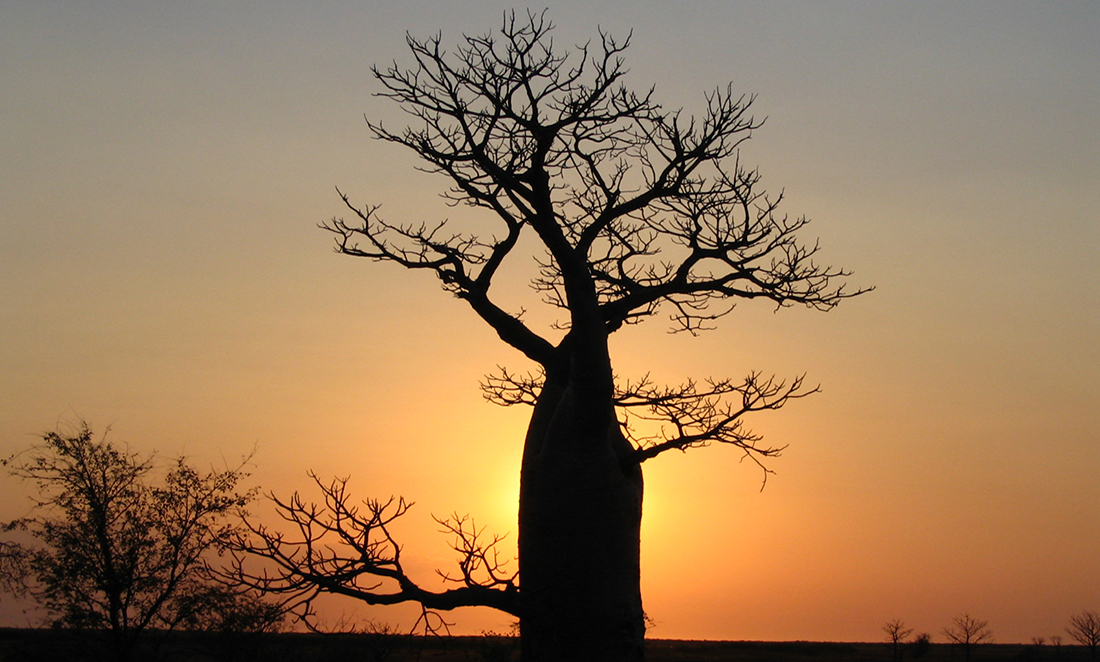
Take the iconic boab tree. This tree is currently found in the Kimberley region of northwestern Australia. In a recent study, Associate Professor Haripriya Rangan found little genetic difference between boabs from different sites across the Kimberley. This meant that the boabs were moving around somehow.
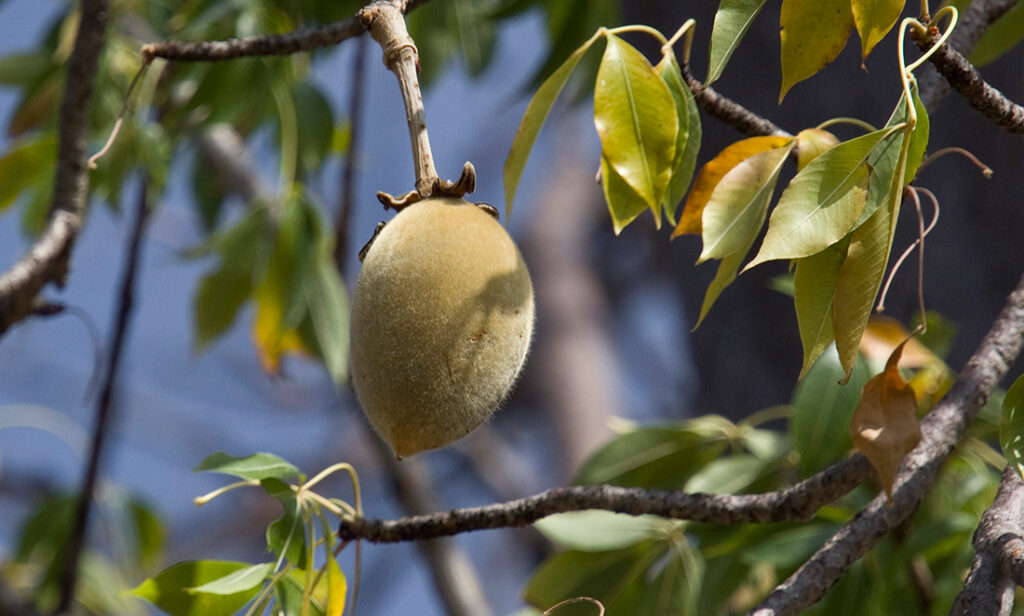
“Our results showed that boab seeds were being transported by some agent—but who or what?"
“Genetic data alone did not provide an answer,” says Haripriya.
So rather than just focusing on genes, Haripriya and her team decided to focus on language. They compared genetic data with the geographic locations of indigenous words used for boabs.
“When we combined our genetic results with the geographic location of different words used to describe boabs, we were amazed. They matched perfectly,” Haripriya says.
“This indicated that ancient Aboriginal Australians from northwest coastal Kimberley were carrying the boab fruit with them as they moved inland and to other parts of the Kimberley. In the process, they were sharing the names for boabs with other Aboriginal groups they encountered,” Haripriya adds.
The boab is not the only case. Another interesting case involves toxic beans and songs. The black bean or bean tree is a large evergreen tree found in Queensland and New South Wales that grows up to 40m high.
Black bean seeds are normally transported by water to new locations, which means the trees are commonly found close to the coast. Oddly, some populations of this tree occur deep in the Australian rainforest—far from the coast and at considerable altitude.
Maurizio Rossetto from the Royal Botanic Garden in Sydney thinks that, just like with the boab trees, humans may have played a role in their movement.
The seeds of the black bean are poisonous but also highly nutritious. Aboriginal Australians have figured out ways to use them for food without getting sick. They make a tasty bread out of the seeds.
To test whether Aboriginal groups moved the trees for food, Maurizio and a team of researchers used a combination of genetic data with traditional knowledge about this tree. They even interviewed five Aboriginal knowledge custodians about the use of black bean trees.
“Our genetic analyses showed very little variation between all the trees from NSW. This suggests that all black bean populations from NSW originated from one or a small number of very closely related trees,” he says.
Their review of literature and interviews revealed extensive use of black bean by Aboriginal groups since historical times. They even found a songline that told the story of a spirit called Nguthungulli. According to the song, the spirit carried and left “bean tree” seeds as he journeyed inland from the east coast to the western ranges.
But plants aren’t the only group whose distribution has been influenced by people. Humans and their use of fire has also played a role in the life of some animals.

Fire and humans
Aboriginal people have been harvesting plant and animal species for thousands of years using traditional techniques that help ensure long-term use. Some of these techniques involve the use of fire.
One study, led by Rebecca Bliege Bird at Penn State University in the USA, found that Gould’s goannas actually do better under an Aboriginal burning approach.
“Our work has shown that burning is important for many species, especially those that are significant as subsistence resources,” says Rebecca.
The study focused on the burning practices of the Martu people. The Martu traditionally lived in the Little Sandy and Great Sandy Deserts of Western Australia. Historically, Gould’s goannas have been an important hunting prize for Martu women. They spend half of their hunting time looking for this half-kilo sand monitor.
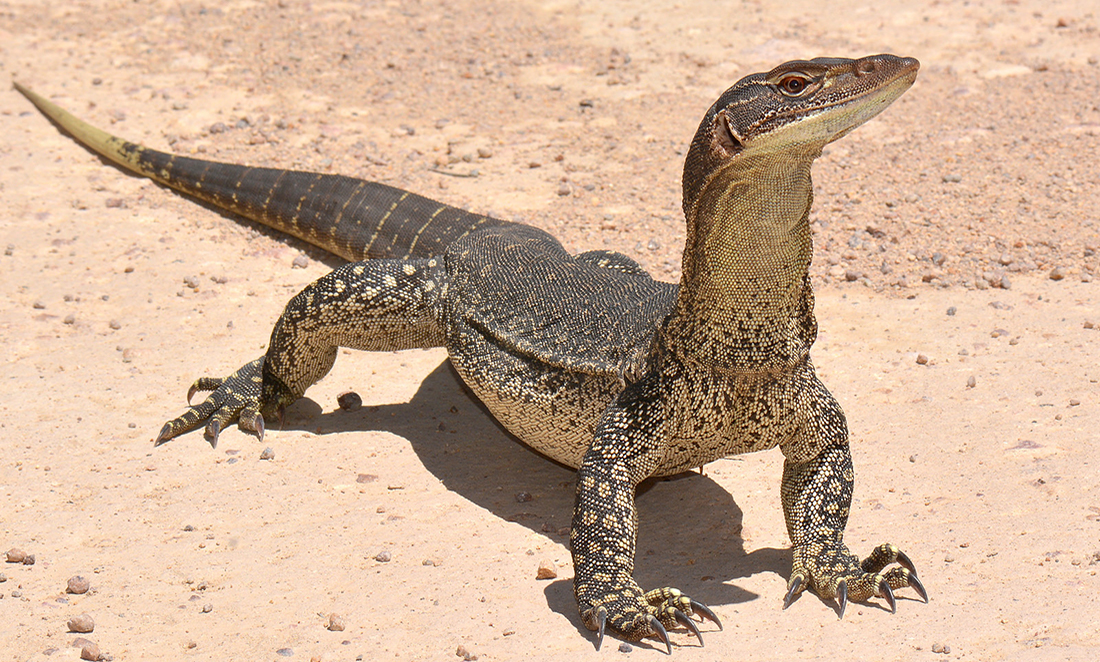
Rebecca found that there were higher populations of these lizards in areas where they were more heavily hunted. But how is that possible?
It turns out the burning technique used by the Martu to hunt the lizards has a positive effect on their habitat. The burning increases the diversity of vegetation patches across the landscape. In places not influenced by the Martu, natural fires are usually caused by lightning. This leads to more extensive damage and lower diversity of plants.
“Where Martu continually make small hunting fires, monitor lizards seem to benefit"
“Perhaps they gain access to a wider set of different types of prey found in more diverse landscapes, or perhaps, they benefit from having an easier time finding protection from predators,” Rebecca says.
Now Rebecca plans to continue her research on the role of burning on other species, such as wild tomatoes.
“There’s been some work in Australia already suggesting that the lack of Aboriginal burning and seed dispersal may be causing the decline of some wild tomato species.”
All in all, these studies show that the actions of ancient Aboriginal tribes have not only benefited humans but also other species.


